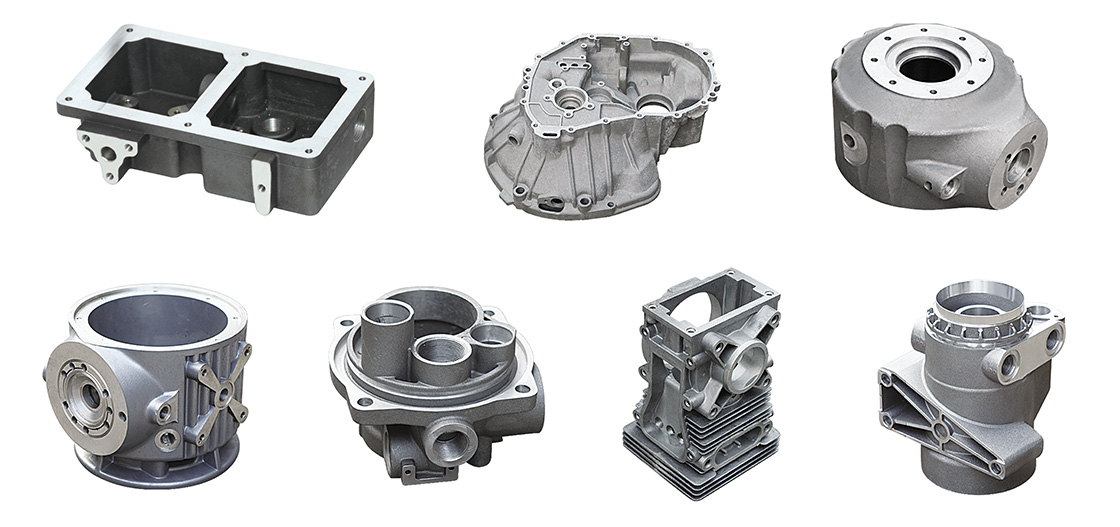The History and Process of Gravity Die Casting at Dongrun
 A Brief History of Gravity Die Casting at Dongrun
A Brief History of Gravity Die Casting at Dongrun
Dongrun Casting has been a trusted name in aluminum casting since the establishment of its gravity die casting shop in 2000. Initially, the facility operated with just one gravity casting machine, laying the foundation for what would become a robust production line. Over the years, Dongrun has expanded its capabilities significantly, now boasting more than ten advanced gravity die casting lines capable of producing up to 3,000 kilograms of aluminum castings daily.
The company specializes in manufacturing high-quality components for various industries, including automotive, subway systems, gas stations, pipelines, and fuel injection housings. Other notable products include wheels and splines. This growth and diversification reflect Dongrun’s commitment to precision engineering and meeting the evolving needs of its customers.
What Is Gravity Die Casting?
Gravity die casting, also known as permanent mold casting or chill casting, is a widely used process for producing aluminum castings with superior surface quality and dimensional accuracy. The terminology varies by region: in the United States, it is commonly referred to as permanent mold casting, while in Europe, it is often called chill casting or gravity casting.
This process is particularly suited for applications requiring low production volumes and high-quality results. Compared to sand casting, gravity die casting delivers smoother surfaces and greater efficiency. The molds used in this process are typically made from durable steel materials such as 45# and H13. Before casting begins, the mold is preheated to approximately 200°C (or up to 300°C for optimal results), ensuring proper aluminum flow and minimizing defects.
In gravity die casting, molten aluminum fills the mold cavity under its own weight, without external pressure. This method is distinct from other casting techniques that rely on vacuum or force to fill the mold. The molds are reusable, allowing for cost-effective production over multiple cycles.
The Gravity Die Casting Process
Dongrun Casting employs a meticulous six-step process to ensure precision and quality in every component produced. Below is a detailed overview of each step:
Step 1: Design the Drawing
 The first step in the process is designing the part to be cast. Dongrun works closely with its customers to create accurate drawings using advanced design software such as UG, SOLIDWORKS, PRO/E, and CAD. These drawings serve as the blueprint for the mold design and subsequent production stages.
The first step in the process is designing the part to be cast. Dongrun works closely with its customers to create accurate drawings using advanced design software such as UG, SOLIDWORKS, PRO/E, and CAD. These drawings serve as the blueprint for the mold design and subsequent production stages.
Step 2: Create the Mold
Once the drawing is finalized, Dongrun designs and manufactures the mold based on the specifications. This involves determining the casting system, analyzing mold flow dynamics, and machining the mold using CNC technology. High-quality steel materials such as 45# and H13 are used to ensure durability and precision.
Step 3: Heat the Mold and Prepare Molten Aluminum
Before casting begins, the mold is preheated to approximately 300°C to ensure that molten aluminum flows smoothly into the cavity and solidifies evenly. At the same time, aluminum alloy is melted and degassed using nitrogen to control porosity and enhance the final product’s structural integrity. Precise temperature control is critical during this stage to achieve optimal results.
Step 4: Apply Coating to the Mold Cavity
A specialized coating is sprayed onto the mold cavity to improve surface smoothness and fire resistance. This enhances both the casting’s appearance and the mold’s longevity, making it more resistant to wear over multiple production cycles.
Step 5: Pour the Molten Aluminum
Once the mold is ready, any necessary cores are inserted into the cavity. The cavity is cleaned with an air sprayer to remove debris, ensuring a flawless finish. A filter screen is placed over the gate to prevent impurities from entering during pouring. Molten aluminum is then carefully poured into the cavity under gravity.
Step 6: Extract the Finished Part
After cooling, the mold is opened, and the solidified aluminum part is ejected. This step marks the completion of one production cycle. The process can be repeated continuously for high-efficiency production runs.
Why Choose Gravity Die Casting?
Gravity die casting offers several advantages over other casting methods:
1. High Surface Quality: Components produced through gravity die casting have a smoother surface finish compared to sand castings, reducing post-processing requirements.
2. Dimensional Accuracy: The precision of CNC-machined molds ensures consistent dimensions across all parts produced.
3. Cost Efficiency: Reusable steel molds allow for multiple production cycles, lowering overall costs for manufacturers.
4. Material Strength: Degassing techniques improve the structural integrity of aluminum castings by minimizing porosity and defects.
5. Eco-Friendly Process: Gravity die casting generates less waste compared to other methods, making it an environmentally friendly choice for manufacturers.
Applications of Gravity Die Casting
Dongrun Casting serves a diverse range of industries with its gravity die casting capabilities:
- Automotive: Production of lightweight yet durable components such as wheels and fuel injection housings.
- Transportation: Manufacturing subway system parts that require high precision and reliability.
- Energy: Fabrication of gas station components designed for long-term performance under harsh conditions.
- Infrastructure: Creation of pipeline components that meet stringent safety standards.
Since its inception in 2000, Dongrun Casting has been at the forefront of gravity die casting technology, delivering high-quality aluminum components to industries worldwide. By combining state-of-the-art equipment with a rigorous production process, Dongrun ensures that every part meets exacting standards for quality and performance.
Whether you need automotive components or specialized parts for infrastructure projects, gravity die casting at Dongrun offers a reliable solution tailored to your needs. With decades of experience and a commitment to innovation, Dongrun continues to set benchmarks in precision aluminum casting.

Video Description: